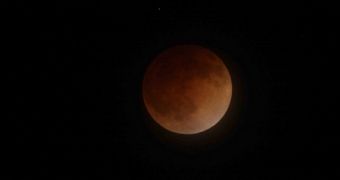Earlier today, people in the United States and Canada had the chance to witness the full splendor of a total lunar eclipse, the last to grace this part of the world until 2019. The event began on Tuesday, April 15, at around 2:00 a.m. EDT (0600 GMT), and lasted for a total of three hours. It reached peak intensity at around 3:45 a.m. EDT (0745 GMT), NASA says.
Total lunar eclipses occur when the Earth aligns perfectly with the Sun and the Moon, with the latter located opposite the Sun with regards to our planet. Terra then casts its shadow on its natural satellite, obscuring it, and making it seems as if it were changing phases within a matter of hours. This latest event was visible from North America, not Europe, Africa or Asia.
However, this will be the last time that the US and Canada are able to enjoy a total lunar eclipse until 2019. Instances of the event will continue to occur, but they will only be visible in their entirety from other parts of the globe. The next total eclipse will occur on October 08, 2014, but will largely be visible from small islands in the Pacific Ocean.
As for the Moon's color during such an event, scientists explain that the Blood Moon is produced by the same phenomenon that gives Earth's sunsets their beautiful colors. The process involves the scattering of reddish hues at optical wavelengths by our planet's atmosphere. These scattering patterns project reddish colors onto the Moon during total eclipses.

 14 DAY TRIAL //
14 DAY TRIAL //